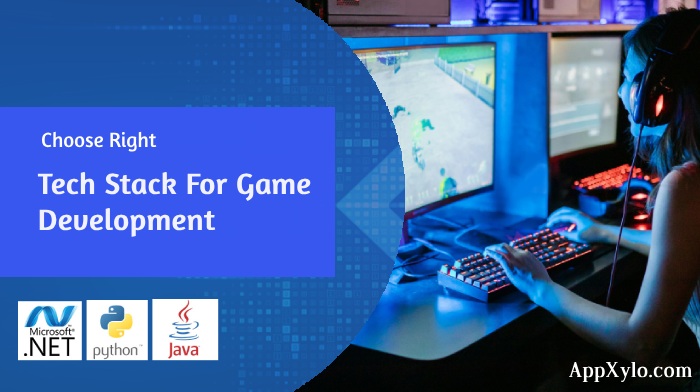Game development is a complex and dynamic process that requires a multitude of tools and technologies to create engaging and immersive gaming experiences. But not all tech stacks are created equal, and the choice of stack can significantly impact the development process, performance, and compatibility across devices and operating systems. In this article, we will explore the various components of a game development tech stack, the best tools for each platform and operating system, and best practices for choosing the right tech stack for your project.
Understanding Game Development Tech Stacks
A game development tech stack encompasses various elements, including game engines, programming languages, graphics libraries, audio tools, networking frameworks, and development environments. Each component plays a crucial role in shaping the development workflow and determining the capabilities and performance of the final game.
Choosing the Right Programming Language
Selecting the right programming language is crucial for the success of any game development project. The following are some of the best programming languages for game development:
.NET: The .NET framework is a reliable and robust platform for game development, suitable for both desktop and web app development. It is a cross-platform technology stack that allows developers to create games for various platforms, including Windows, macOS, Linux, Android, iOS, Xbox, PlayStation, Nintendo, and mixed reality platforms.
C++: C++ is a powerful object-oriented programming language that is widely used in game development. It is used in popular game engines such as Unreal Engine and CryEngine.
Java: Java is a versatile programming language that is used in game development for Android, desktop, and web apps. It is a multi-purpose language that is supported by most businesses due to its reliability.
Python: Python is a popular object-oriented programming language that is known for its simplicity and flexibility. It is used in game development for prototyping and creating simple games.
Game Engines and Physics Libraries
Game engines and physics libraries are essential components of a game development stack. They provide the necessary tools for creating game mechanics, physics simulations, and rendering graphics.
Unity: Unity is a popular game engine that is used for creating 2D and 3D games. It supports various platforms, including Windows, macOS, Linux, Android, iOS, and consoles.
Unreal Engine: Unreal Engine is a powerful game engine that is used for creating high-quality 3D games. It supports various platforms, including Windows, macOS, Linux, Android, iOS, and consoles.
PhysX: PhysX is a physics engine that is used for creating physics simulations in games. It is used in popular game engines such as Unreal Engine and CryEngine.
Sound and Graphics Libraries
Sound and graphics libraries are essential components of a game development stack. They provide the necessary tools for creating sound effects, music, and graphics.
SDL: SDL is a cross-platform development library that is used for creating sound and graphics in games.
OpenGL: OpenGL is a graphics library that is used for rendering 2D and 3D graphics in games.
DirectX: DirectX is a graphics library that is used for creating 3D graphics in games. It is used in popular game engines such as Unreal Engine and CryEngine.
Version Control Systems and Collaboration Tools
Version control systems and collaboration tools are essential components of a game development stack. They provide the necessary tools for managing code, tracking changes, and collaborating with team members.
Git: Git is a popular version control system that is used for managing code in game development projects.
GitHub: GitHub is a popular collaboration platform that is used for hosting and sharing code in game development projects.
Bitbucket: Bitbucket is a collaboration platform that is used for hosting and sharing code in game development projects.
Game Development Frameworks and Libraries
Game development frameworks and libraries are essential components of a game development stack. They provide the necessary tools for creating game mechanics, physics simulations, and rendering graphics.
MonoGame: MonoGame is a game development framework that is used for creating 2D and 3D games. It supports various platforms, including Windows, macOS, Linux, Android, iOS, and consoles.
SFML: SFML is a simple and fast multimedia library that is used for creating games. It supports various platforms, including Windows, macOS, Linux, and consoles.
Raylib: Raylib is a simple and easy-to-use game development library that is used for creating 2D games. It supports various platforms, including Windows, macOS, Linux, and consoles.
Best Practices for Game Development Stacks
Choosing the right tech stack for your game development project is crucial for its success. Here are some best practices to follow:
Planning: Plan your game development project carefully. Identify the platform, operating system, and target audience for your game.
Choosing the Right Tools: Choose the right tools for your game development project. Consider the programming language, game engine, physics library, sound and graphics libraries, version control system, and collaboration tools.
Collaboration: Collaborate with your team members. Use collaboration tools to manage code, track changes, and communicate with team members.
Testing: Test your game thoroughly. Use testing tools to identify and fix bugs.
Maintenance: Maintain your game regularly. Use version control systems to manage code and track changes.
Conclusion:
Selecting the right tech stack for game development requires careful consideration of factors such as game genre, target platforms, team expertise, and project requirements. By leveraging the appropriate combination of game engines, programming languages, libraries, and tools, developers can create immersive, high-quality gaming experiences that captivate players across different platforms and devices. Whether you’re a seasoned game developer or a newcomer to the industry, understanding the fundamentals of game tech stacks is essential for realizing your creative vision and bringing your game ideas to life.
By following these guidelines and staying informed about emerging technologies and best practices, game developers can stay ahead of the curve and deliver innovative gaming experiences that resonate with audiences worldwide.


